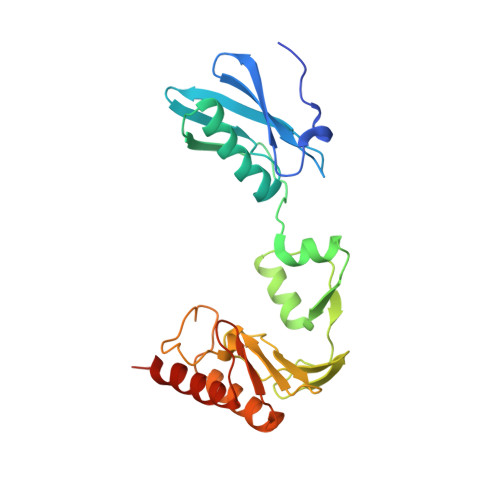Cryptic genetic variation shapes the adaptive evolutionary potential of enzymes.
Baier, F., Hong, N., Yang, G., Pabis, A., Miton, C.M., Barrozo, A., Carr, P.D., Kamerlin, S.C., Jackson, C.J., Tokuriki, N.(2019) Elife 8
- PubMed: 30719972
- DOI: https://doi.org/10.7554/eLife.40789
- Primary Citation of Related Structures:
6BM9 - PubMed Abstract:
Genetic variation among orthologous proteins can cause cryptic phenotypic properties that only manifest in changing environments. Such variation may impact the evolvability of proteins, but the underlying molecular basis remains unclear. Here, we performed comparative directed evolution of four orthologous metallo-β-lactamases toward a new function and found that different starting genotypes evolved to distinct evolutionary outcomes. Despite a low initial fitness, one ortholog reached a significantly higher fitness plateau than its counterparts, via increasing catalytic activity. By contrast, the ortholog with the highest initial activity evolved to a less-optimal and phenotypically distinct outcome through changes in expression, oligomerization and activity. We show how cryptic molecular properties and conformational variation of active site residues in the initial genotypes cause epistasis, that could lead to distinct evolutionary outcomes. Our work highlights the importance of understanding the molecular details that connect genetic variation to protein function to improve the prediction of protein evolution.
Organizational Affiliation:
Michael Smith Laboratory, University of British Columbia, Vancouver, Canada.



















